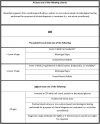Diagnostic Approach to Health Care- and Device-Associated Central Nervous System Infections
- PMID: 30135235
- PMCID: PMC6204668
- DOI: 10.1128/JCM.00861-18
Diagnostic Approach to Health Care- and Device-Associated Central Nervous System Infections
Abstract
Health care- and device-associated central nervous system (CNS) infections have a distinct epidemiology, pathophysiology, and microbiology that require a unique diagnostic approach. Most clinical signs, symptoms, and tests used to diagnose community-acquired CNS infections are insensitive and nonspecific in neurosurgical patients due to postsurgical changes, invasive devices, prior antimicrobial exposure, and underlying CNS disease. The lack of a standardized definition of infection or diagnostic pathway has added to this challenge. In this review, we summarize the epidemiology, microbiology, and clinical presentation of these infections, discuss the issues with existing microbiologic tests, and give an overview of the current diagnostic approach.
Keywords: central nervous system infections; implanted devices; meningitis; ventriculitis.
Copyright © 2018 American Society for Microbiology.
Figures



References
-
- Youmans JR, Winn HR. 2011. Youmans neurological surgery. Saunders/Elsevier, Philadelphia, PA.
Publication types
MeSH terms
Substances
LinkOut - more resources
Full Text Sources
Other Literature Sources

